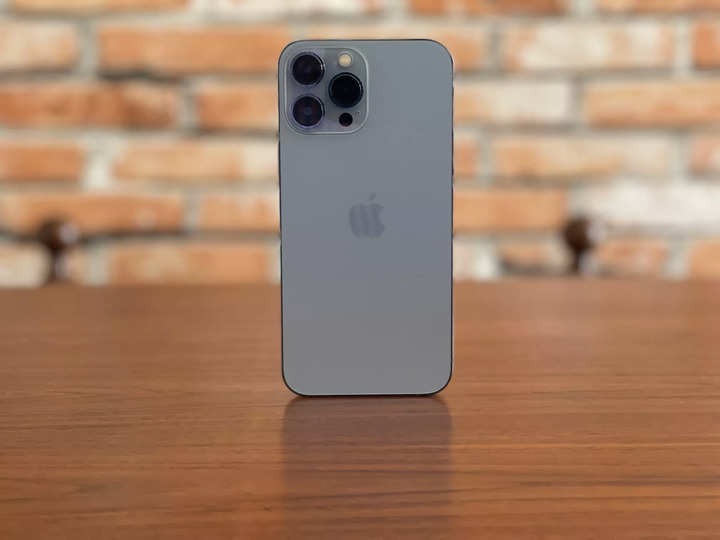Introduction:
The iPhone revolutionized the mobile phone industry when it was first introduced in 2007. Since then, it has become one of the most popular and powerful smartphones on the market. In this guide, I will provide some tips on how to make the most of your iPhone and take advantage of its features and capabilities.
- Keep your iPhone up to date: Apple regularly releases software updates for the iPhone, which include bug fixes, security patches, and new features. Make sure to install these updates to ensure that your device is running smoothly and securely.
- Customize your settings: Take the time to explore the settings on your iPhone and customize them according to your preferences. You can adjust things like display brightness, sounds, notifications, and privacy settings to make your iPhone work exactly how you want it to.
- Explore the App Store: The App Store is home to millions of apps that can enhance your iPhone experience. From productivity tools to entertainment apps, there is something for everyone. Take some time to browse the App Store and discover new apps that can make your life easier or more enjoyable.
- Organize your apps: As you download more apps, your home screen can become cluttered. Organize your apps into folders and move them around to make them easier to find. You can also use the search feature on your iPhone to quickly locate specific apps.
Remember, the iPhone is a powerful device with a lot of features and capabilities. Take the time to explore and experiment with it to make the most of what it has to offer.
Keeping Your iPhone Updated

Keeping your iPhone updated is essential for ensuring optimal performance, security, and access to the latest features. Here are some key points to cover under the subheading “Keeping Your iPhone Updated”:
- 1. The Importance of Software Updates:
- Explain that software updates are released by Apple to improve the iPhone’s functionality, address bugs and security vulnerabilities, and introduce new features.
- Emphasize the significance of staying up to date to benefit from enhanced performance, stability, and security measures.
- 2. Checking for Updates:
- Explain how to check for software updates on the iPhone.
- For iOS 15 or later, guide users to go to “Settings” > “General” > “Software Update” to check for available updates.
- For earlier iOS versions, the process may vary slightly, so provide appropriate instructions.
- 3. Installing Updates:
- Explain the process of installing updates once they are available.
- Depending on the iPhone model and settings, users can choose to install updates automatically or manually.
- Describe how to initiate the update process and the importance of having a stable internet connection and sufficient battery life during the update.
- 4. Benefits of Updating:
- Highlight the advantages of updating your iPhone:
- Improved performance and speed.
- Enhanced security with patches for known vulnerabilities.
- Access to new features and functionalities.
- Compatibility with the latest apps and services.
- Highlight the advantages of updating your iPhone:
Customizing Your iPhone Settings
Customizing your iPhone settings allows you to personalize your device and tailor it to your preferences. Here are some key points to cover under the subheading “Customizing Your iPhone Settings”:
- 1. Display and Brightness Settings:
- Explain how to adjust the display and brightness settings on your iPhone.
- Describe how users can change the brightness level manually or enable auto-brightness for automatic adjustments based on ambient lighting.
- Mention the Night Shift feature, which reduces blue light emitted by the screen for a more comfortable viewing experience in the evening.
- 2. Sound and Notification Settings:
- Discuss how to customize sound and notification settings on your iPhone.
- Explain how to adjust the volume, change ringtones, and set vibration patterns.
- Discuss notification settings, including how to manage alerts, enable or disable notifications for specific apps, and use the Do Not Disturb feature to silence notifications during certain times or activities.
- 3. Privacy and Security Settings:
- Emphasize the importance of privacy and security settings on your iPhone.
- Discuss how to manage privacy settings, such as location services, app permissions, and data sharing.
- Explain the importance of enabling features like Face ID, Touch ID, or passcodes to protect your device and personal information.
- 4. Accessibility Settings:
- Discuss the accessibility settings available on the iPhone.
- Highlight features such as VoiceOver for spoken feedback, Display Accommodations for visual enhancements, and AssistiveTouch for customizing touch gestures.
- Encourage users to explore the accessibility settings and find options that can improve their experience based on their individual needs.
Encourage users to explore the various settings on their iPhone to find options that suit their preferences and enhance their overall experience. Provide clear instructions and visuals, if necessary, to help readers navigate through the settings and customize their device effectively.
Exploring the App Store

Exploring the App Store is a great way to discover new and useful apps that can enhance your iPhone experience. Here are some key points to cover under the subheading “Exploring the App Store”:
- 1. Navigating the App Store:
- Explain how to access the App Store on your iPhone.
- On the home screen, tap the “App Store” icon to open the store.
- Describe the different sections of the App Store, such as Today, Games, Apps, and Search.
- 2. Browsing App Categories:
- Discuss the various app categories available in the App Store.
- Examples of popular categories include Games, Productivity, Entertainment, Health & Fitness, Education, and more.
- Encourage users to explore different categories based on their interests and needs.
- 3. Featured and Recommended Apps:
- Highlight the “Today” tab in the App Store, which showcases featured and recommended apps.
- Explain that the Today tab provides curated collections, app highlights, and tips for using apps effectively.
- Encourage users to check the Today tab regularly for new app recommendations and exclusive content.
- 4. App Search:
- Describe how to use the search feature in the App Store.
- Explain that users can search for specific apps, developers, or keywords to find relevant results.
- Encourage users to refine their searches using filters like app ratings, price range, or specific features.
- 5. App Details and Reviews:
- Explain how to access detailed information about an app before downloading it.
- When viewing an app, users can read the app description, check screenshots or videos, view user ratings and reviews, and see additional information like the app’s size, compatibility, and developer details.
- Encourage users to read reviews and ratings to get an idea of the app’s quality and user satisfaction.
Encourage users to explore the App Store regularly to discover new apps, check for updates, and make the most of the diverse range of apps available. Remind them to read app descriptions, reviews, and ratings to make informed decisions before downloading or purchasing apps.
Organizing Your Apps
Organizing your apps on your iPhone can help you declutter your home screen, make apps easier to find, and improve your overall user experience. Here are some key points to cover under the subheading “Organizing Your Apps”:
- 1. Creating App Folders:
- Explain how to create folders to group similar apps together.
- Tap and hold an app icon until the apps start jiggling.
- Drag an app onto another app to create a folder.
- Rename the folder to reflect the category of apps it contains.
- 2. Moving and Rearranging Apps:
- Describe how to move apps around on your home screen or between different screens.
- Tap and hold an app until the apps start jiggling.
- Drag the app to a new location or to another screen.
- Organize apps by dragging them into folders or arranging them based on frequency of use or personal preference.
- 3. Utilizing the App Library:
- Explain that the App Library is a feature introduced in iOS 14 that automatically organizes apps into categories and provides an additional space for app storage.
- Swipe to the rightmost page of your home screen to access the App Library.
- Apps are automatically organized into categories, and users can search for specific apps using the search bar at the top.
- 4. Searching for Apps:
- Highlight the search feature on your iPhone for quickly finding apps.
- Swipe down on the home screen to reveal the search bar.
- Start typing the name of the app you’re looking for, and relevant results will appear.
- 5. Resetting App Layout:
- Explain how to reset the app layout if you want to start organizing your apps from scratch.
- Go to “Settings” > “General” > “Reset.”
- Tap on “Reset Home Screen Layout” to revert to the default app arrangement.
Encourage users to take some time to organize their apps in a way that suits their preferences and usage patterns. Remind them that organizing apps can help streamline their iPhone experience and make finding and accessing apps much easier.

Conclusion:
In conclusion, making the most of your iPhone involves various aspects, including keeping it updated, customizing your settings, exploring the App Store, and organizing your apps. By following the tips and guidelines provided in this article, you can optimize your iPhone experience and unlock its full potential.
Keeping your iPhone updated ensures that you have the latest software improvements, security patches, and access to new features. Regularly check for updates and install them to enjoy enhanced performance and protection.
Customizing your iPhone settings allows you to personalize your device to suit your preferences. From display and brightness settings to privacy and security options, take the time to customize your iPhone to create a personalized and comfortable user experience.



